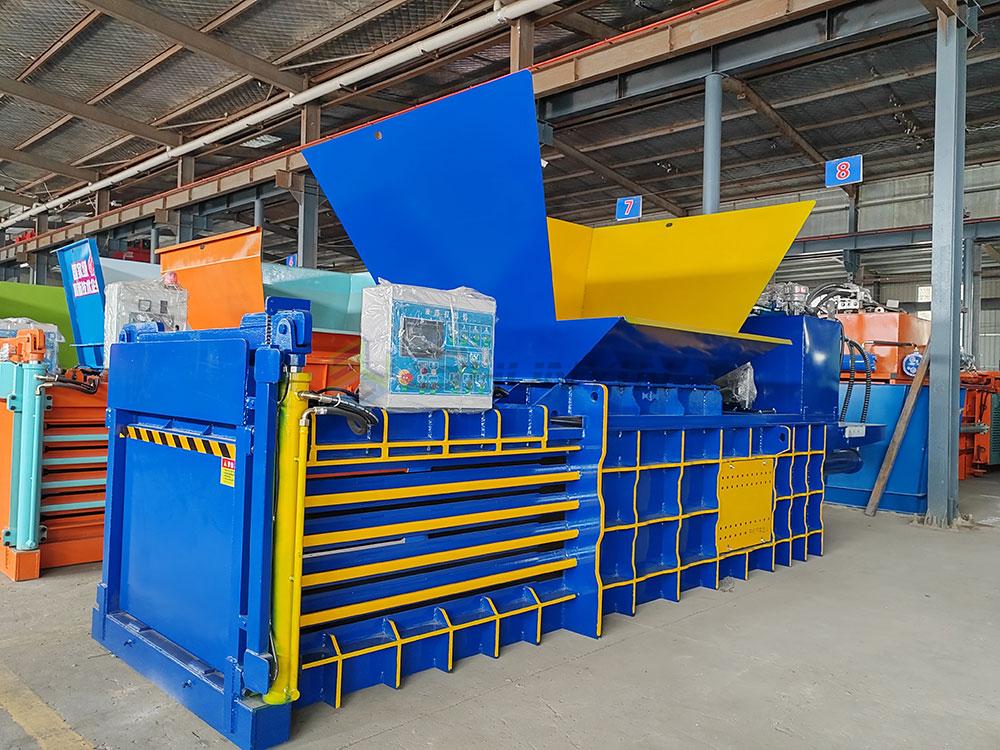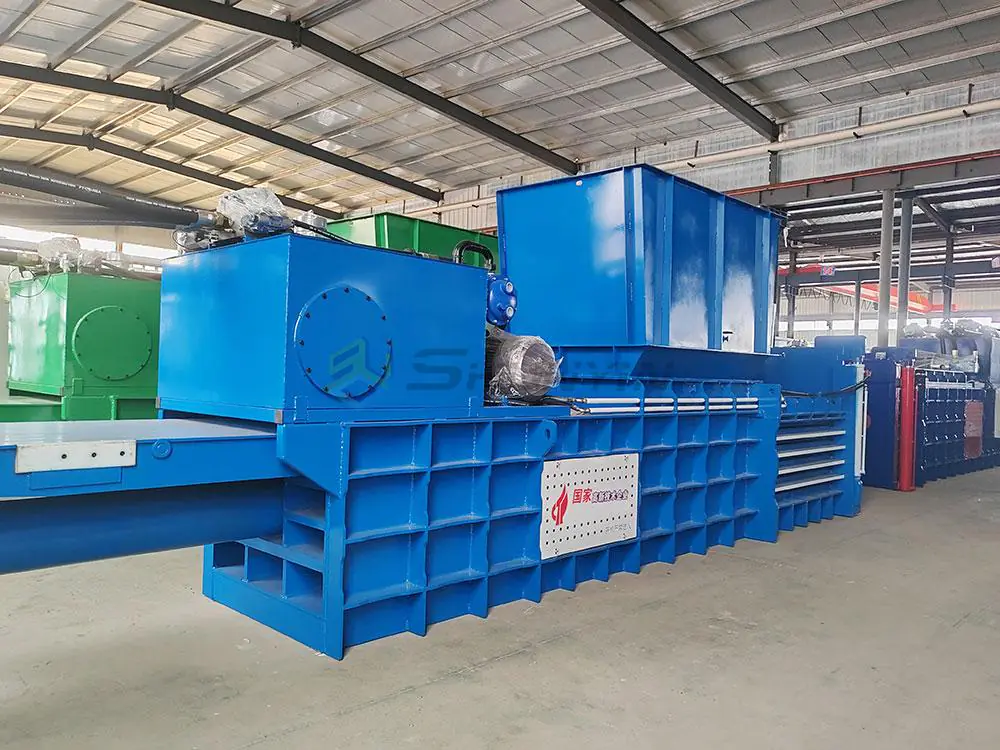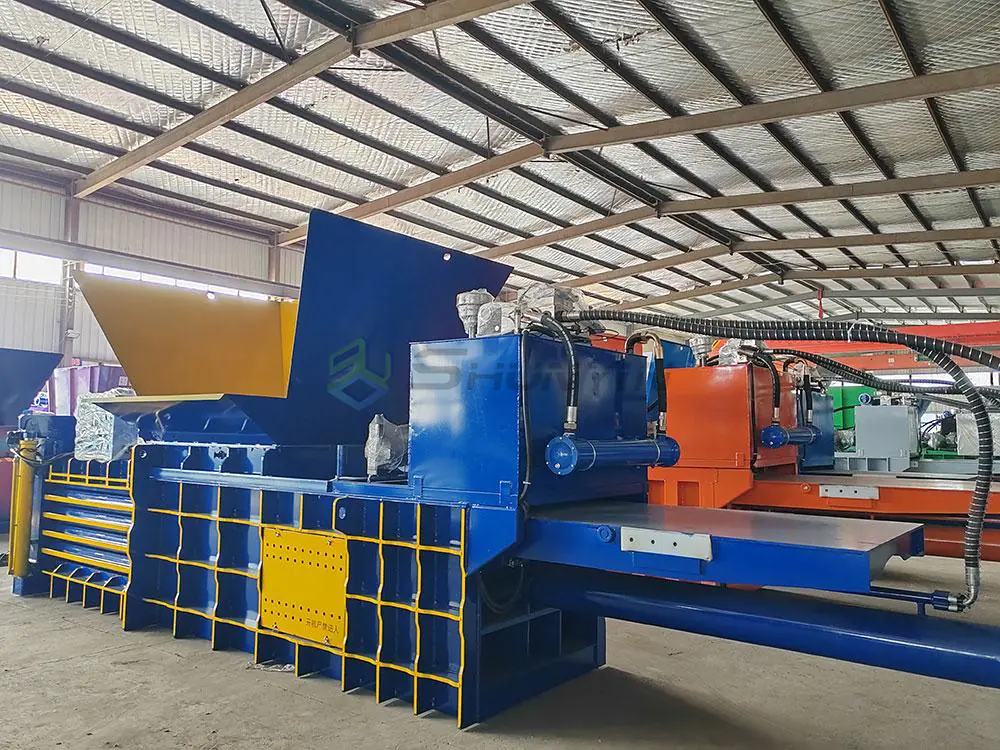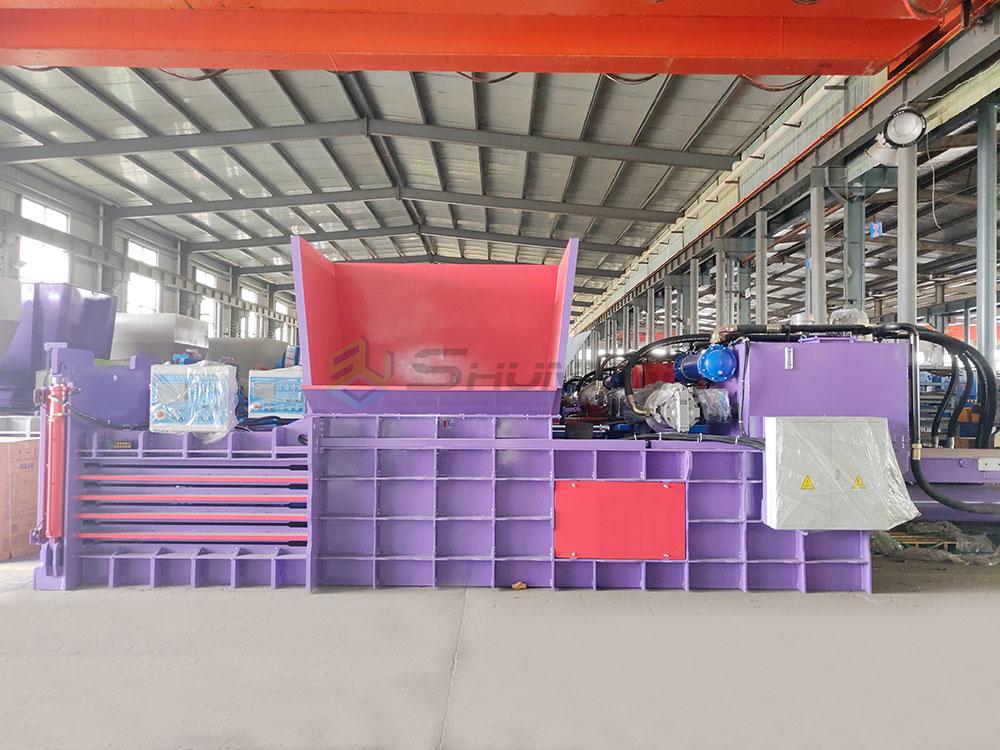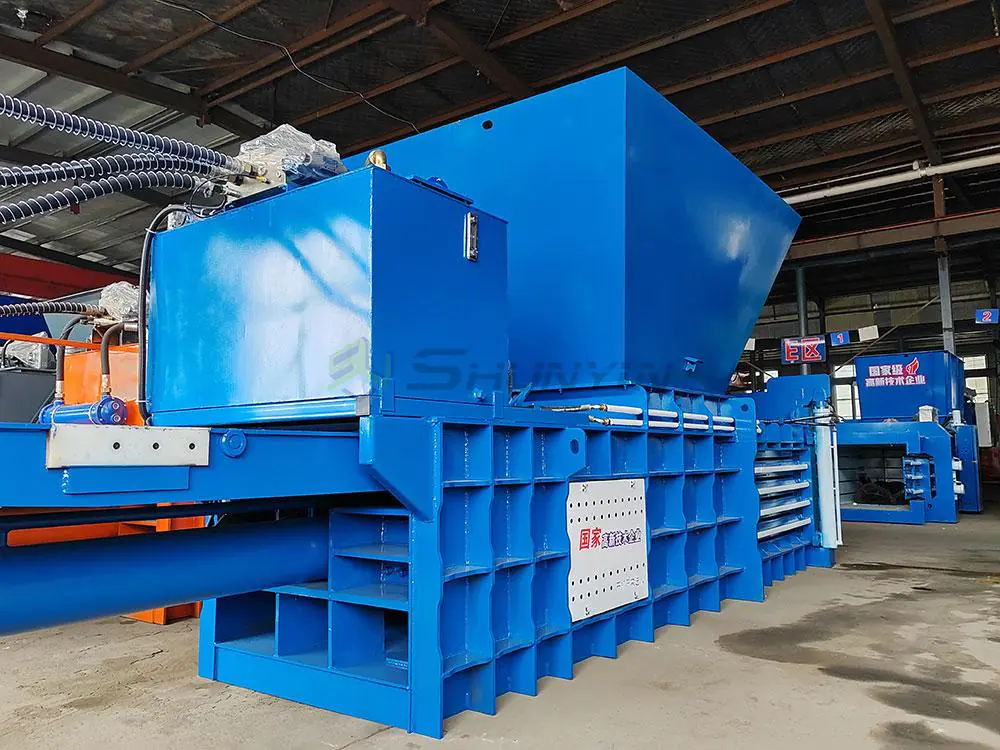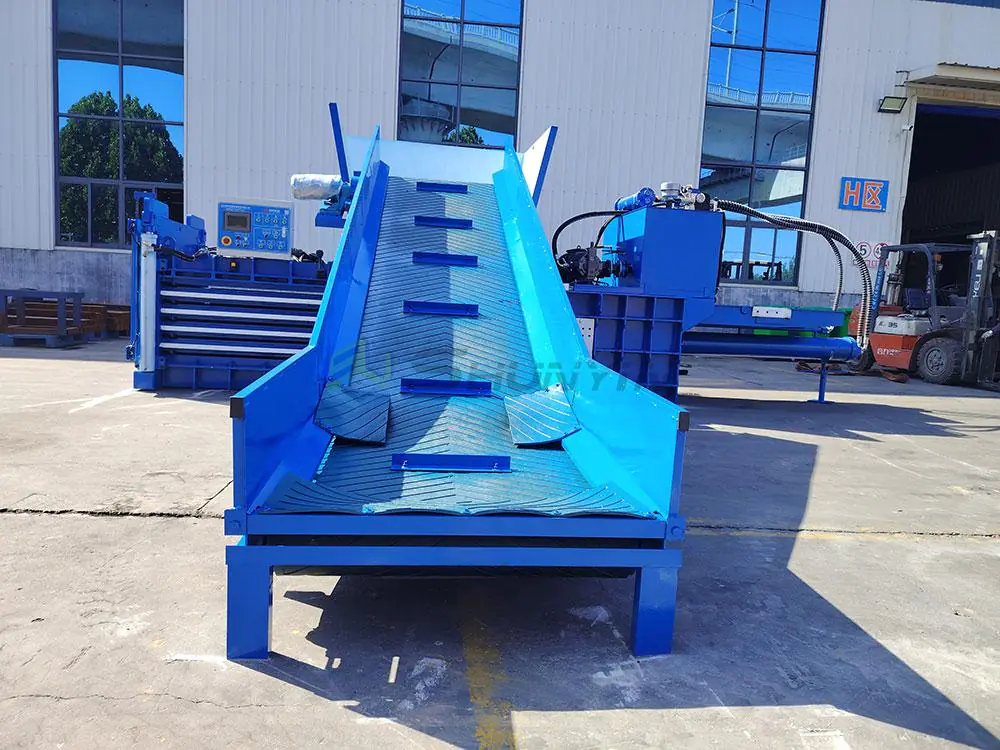
Struggling to handle bulky recyclables efficiently? Untamed waste slows operations and drains profits. Hydraulic balers crush materials into profit-boosting bundles fast.
A hydraulic baling press machine uses hydraulic cylinders to compress recyclables like metal, paper, or plastic into dense, transport-ready bales, drastically cutting storage space by 90%, reducing labor/costs, enhancing safety, and making waste valuable.
Discover how this powerhouse transforms messy waste streams into profit. I’ll unpack each function with real-life insights below. Keep reading.
What is a hydraulic baling machine?
Watching workers wrestle ungainly waste piles? Balers tame chaos through hydraulic force, turning scattered scraps into sellable units.
Hydraulic baling machines apply immense fluid-driven pressure to compact recyclables. They consist of key parts like cylinders, pumps, and chambers to crush materials 5-10X denser than loose waste.

Core components and operations
Hydraulic balers don’t just smash waste. They optimize recycling chains through precision engineering. Let me break it down.
How pressure powers efficiency
Fluid mechanics generate force. Oil pumps drive cylinders to deliver up to 200 tons of pressure. This crushes even rigid metals into blocks. See what this creates:
| Pressure Level | Materials Handled | Bale Density Achieved |
|---|---|---|
| Low (50-100 tons) | Cardboard, plastic | 400-600 kg/m³ |
| Medium (100-150 tons) | Clothing, foam | 700-900 kg/m³ |
| High (150-200 tons) | Steel, electronics | 1000-1300 kg/m³ |
Higher density means 10+ truckloads become one. Last quarter, Lambert saved $8,500/month in freight using our high-tonnage models.
Horizontal vs vertical baler traits
Horizontal versions handle large volumes fast. Vertical types save floor space. Choose based on needs:
- Space: Vertical occupies 40% less area
- Speed: Horizontal processes 3X faster
- Cost: Vertical starts 30% cheaper
One Japanese client doubled output switching to our custom horizontal unit. Talk to our engineers: https://lemonchiffon-shark-638535.hostingersite.com/contact/
What is the purpose of a hydraulic press machine?
Seeing waste occupy prime warehouse space? Hydraulic presses turn volume liabilities into profit centers instantly.
The core purpose is compression: reducing recyclable volumes by up to 90%, enabling cost-efficient storage/transport, minimizing contamination, and creating standardized bales for higher resale value.

Beyond volume control
Purpose starts with compaction but extends to operational transformation. I’ve seen clients reinvent recycling workflows.
Economic and workflow impacts
Dense bales streamline every downstream step. Compare:
| Aspect | Pre-Baling Workflow | Post-Baling Workflow | Savings |
|---|---|---|---|
| Labor | Manual handling/stacking | Automated loading | 65% time reduction |
| Transport | 15 weekly truckloads | 2 weekly truckloads | 87% fuel savings |
| Storage | 300 sq. meters | 30 sq. meters | 90% space freed |
These gains compound into 6-18 month payback periods for serious recyclers like Lambert.
Safety and compliance boosts
Hydraulic presses also prevent common hazards:
- Less loose waste = fewer cuts or trips
- No dust clouds from piled material
- Certifiable bales pass international recycling standards
Our machines come with TÜV and CE docs to prove quality. Ditch operational headaches today: https://lemonchiffon-shark-638535.hostingersite.com/contact/
What are the disadvantages of hydraulic press machine?
Can even robust equipment have limits? Yes. Hydraulic balers demand smart investment decisions.
The main disadvantages include higher upfront costs, specialized maintenance needs, oil leak risks, slower cycles versus conveyor alternatives, occasional noise pollution, and needing operators with basic training.

Managing limitations effectively
Every tool has trade-offs. Key disadvantages become non-issues with the right supplier. Let’s explore.
Mitigation strategies
Smart planning neutralizes downsides. For example:
| Disadvantage | Impact Level (1-5) | Our Mitigation Approach |
|---|---|---|
| Upfront cost | ⭐⭐⭐⭐⭐ | Flexible lease financing plans |
| Maintenance | ⭐⭐⭐⭐ | Free training + global spare parts network |
| Oil leaks | ⭐⭐⭐ | Sealed, ISO-certified cylinders |
| Speed | ⭐⭐ | Automatable ejection systems |
For Lambert, our predictive maintenance kits prevented $20,000 downtime loss last year. Avoidable problems needn’t stall operations.
Choosing the right machine
Not all hydraulic balers fit all needs. Prioritize:
- Low-volume plants → Vertical balers
- High-volume centers → Horizontal models
- Noise-sensitive areas → Soundproofed units
I’ll help match specs to your output. Reach out for a consultation and skip costly mistakes.
What is the purpose of a baler machine1?
Why dedicate machines solely to baling? Untreated waste hemorrhages value. Balers reclaim every percentage point.
A baler machine exists to transform loose recyclables into compact, transportable bales—maximizing storage efficiency, ensuring material purity for premium recycling, reducing handling risks, and converting landfill costs into revenue.

Strategic profit creation
Balers create value far beyond compaction. For suppliers like me, they’re business transformation tools.
Waste-to-revenue lifecycle
Analyzing recyclables reveals profit potential. Take cardboard:
- Loose cardboard → Disposal cost: $150/ton
- Baler processes → Handling cost: $30/ton
- Grade-A bale sale → Revenue: $120/ton → Net gain: $90/ton
Lambert tripled margins using our balers to supply Canadian paper mills. That’s typical ROI.
Customization for profit optimization
Different materials need tailored approaches. We configure:
- Tire baling → High compression2 + wire tying
- Textile baling → Medium pressure + auto-tiers
- Metal baling → Extreme force + chamber cooling
Don’t let inconsistent output hurt branding. Get balers that match your materials for market advantage.
Conclusion
Hydraulic balers slash costs while turning waste into revenue through high-density compaction, making them essential recycling investments globally. Transform your scrap now.


